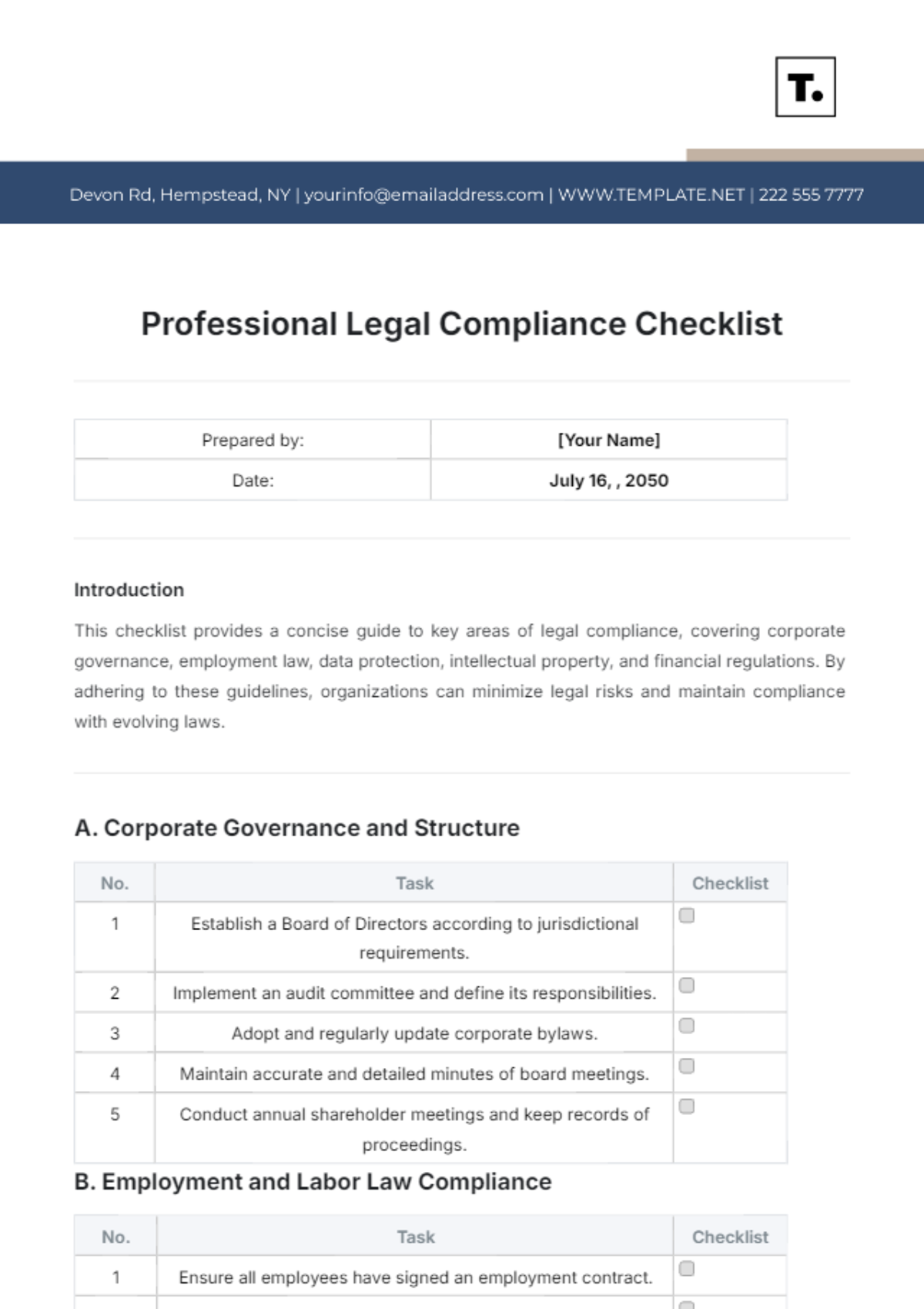Free Factory Compliance Checklist
Discover peace of mind with our Factory Compliance Checklist Template, available exclusively at Template.net. This meticulously crafted tool is fully editable and customizable, ensuring seamless integration with your specific needs. Effortlessly tailor your checklist using our Ai Editor Tool, simplifying compliance management like never before.






























